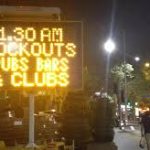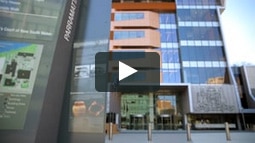Sydney’s Lockout Laws, Are they working?
In January 2014, NSW introduced reforms to the NSW Liquor Act, otherwise referred to as “lockout laws” that restricts alcohol sales in an attempt to reduce violent alcohol-fueled assaults. Three of the key reforms in these lockout areas are:
-Bottle shops cannot sell alcohol after 10 pm.
-Patrons who leave or are ejected from bars after 1:30 am are to be “locked out.”
-Last drinks must be served by 3:00 am.
The reforms were put in place in response to the deaths of teenagers Daniel Christie and Thomas Kelly who were both victims of one punch attacks in Kings Cross. These two tragic deaths were examples of how much the level of alcohol-fueled violence has increased in the central business district of Sydney over the past few years. Prior to the lock out laws, hospitals would be swamped with head injuries and other horrific alcohol-induced traumas. However, since the NSW lockout laws have come into effect hospital staff say serious head injuries have dropped by 50 per cent.
The debate now is whether the lock out laws are working.
According to their media release in April 2015 entitled “Lockout” Law Evaluation, the NSW Government say “[r]eforms to the NSW Liquor Act . . . appear to have substantially reduced the incidence of assault in the Kings Cross and Sydney CBD entertainment precincts.”
Toby Hall group chief executive of St Vincent’s Health Australia said “[i]t’s absolutely clear from what we are seeing since the lockout was put in place, there’s been a significant reduction in the level of severe trauma and particularly a reduction in the number of people visiting very early in the morning through to mid-morning, through trauma-based instances.”
A study done by Kypros Kypri of the University of Newcastle, indicates that there was a “37 per cent fall in alcohol-related violence with a reduced pub closing time of 3.30 a.m. in comparison to a control locality.”
Criminals in Sydney just moving from one place to another?
However, people on the other side of the debate say that the new lockout laws do not solve the problem. They just push the violence outside of downtown Sydney into areas like Newtown, and Pyrmont. SMH analysed the NSW Bureau of Crime Statistics and Research numbers and discovered that although alcohol-related assaults in Potts Point fell by 42.6 per cent and 36.3 per cent in Darlinghurst, areas outside the lockout zones increased. For example, there was an 18 per cent increase in violence in Newtown and a “46 per cent increase in alcohol-related assaults in Pyrmont” since the lock out laws came into effect.
Interestingly though this is not reflected in the hospitals of these outer areas whose managers and clinicians say they have not seen a spike in admissions related to alcohol-fuelled violence.
According to people protesting the lockout laws, it is not the drinking laws that need to be adjusted it is the much broader cultural issue of male violence. The lockout laws are viewed as reactionary to a couple of isolated tragic incidents and do not take the community as a whole into consideration. By pushing people out onto the streets of Sydney, these lockout laws will only serve to further ignite an already agitated group who will no longer have the safety of the venue.
The lockout laws also do not take into account that alcohol-fueled violence in NSW is actually at its lowest since 2002, according to the Bureau of Crime Statistics and Research.







